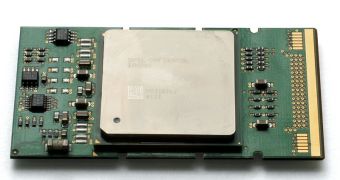Despite all the controversy surrounding the Itanium architecture, Intel still hasn’t canceled its plans for the next-generation Poulson core, which according to a recent report should enter production in the second quarter of 2012.
Poulson is Intel's most complex general-purpose processor to date as it features 3.1 billion transistors inside a 588 square millimeter die (Sandy Bridge-E includes 2.27 billion transistors).
Compared to the current Tukwilla, the chip doubles the number of cores available (from four to eight), packs a 12-instruction wide pipeline as well as a series of multithreading enhancements, and new instructions to take advantage of parallelism, especially in virtualization.
In addition, the chip features 54MB of total cache, including 32MB of shared L3 cache and according to CPU-World will also support the Instruction Reply Technology, which comes as an enhancement for RAS and allows the CPU to re-execute the current instruction if it detects an error during its execution.
The Hyper-Threading technology will also be present and this now gets support for dual-domain multithreading.
Just like its predecessor, Poulson will use the same CPU interface and chipsets as Intel's x86-based Xeon server processors while also retaining pin-compatibility with Tukwilla. However, the new architecture gets an upgraded QPI link that is now capable of reaching 6.4 GBps.
The chip is built using the 32nm fabrication process and, as a result, its die size is 20 percent smaller than that of previous Itanium CPUs.
No other information regarding clocks speeds of TDPs is available at this time, but more details should be unveiled once we get nearer to Poulson’s launch.
The Itanium CPU family is specially designed to be used in enterprise servers and high-performance computing systems and its competes directly with the SPARC architecture.

 14 DAY TRIAL //
14 DAY TRIAL //